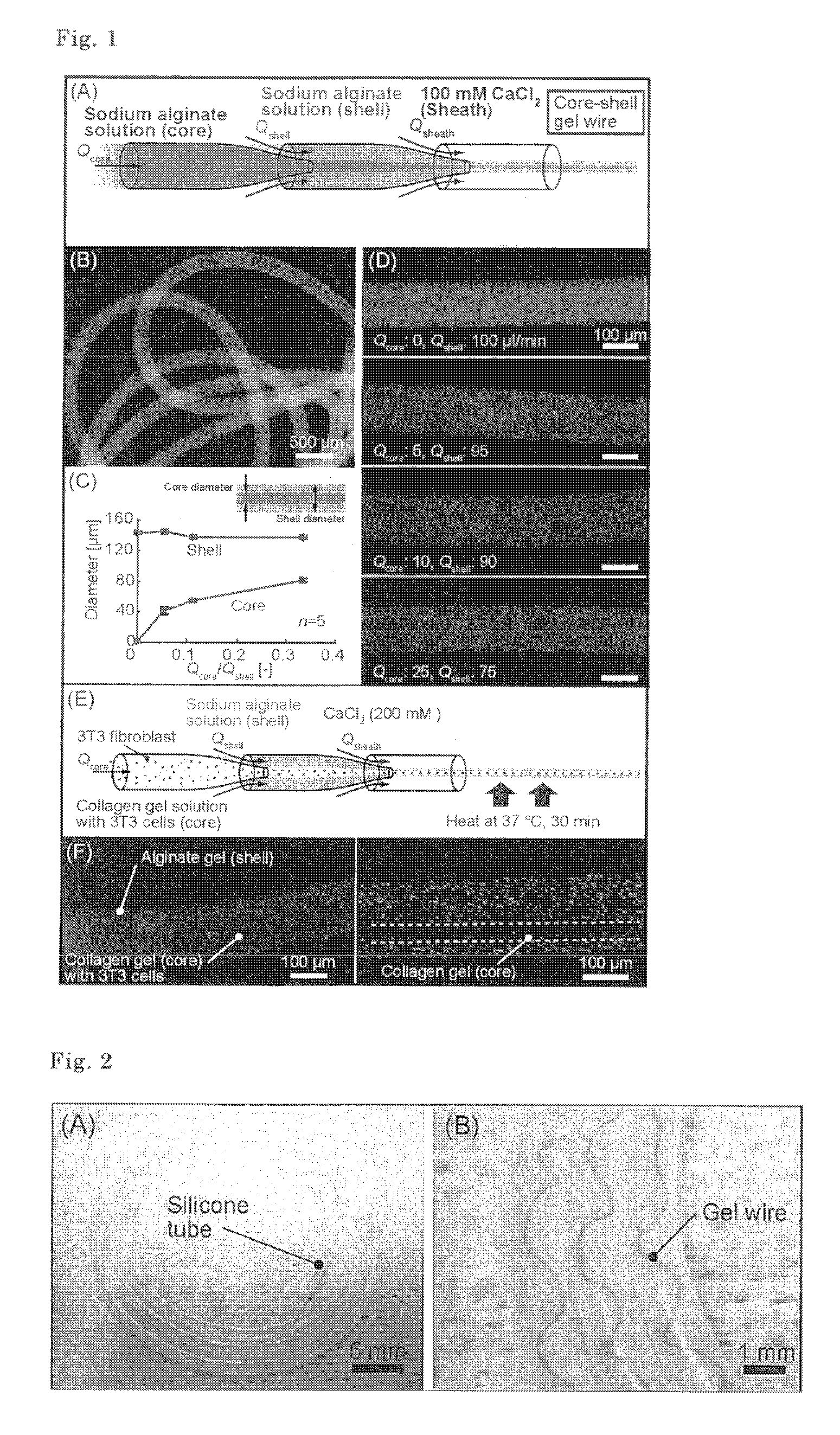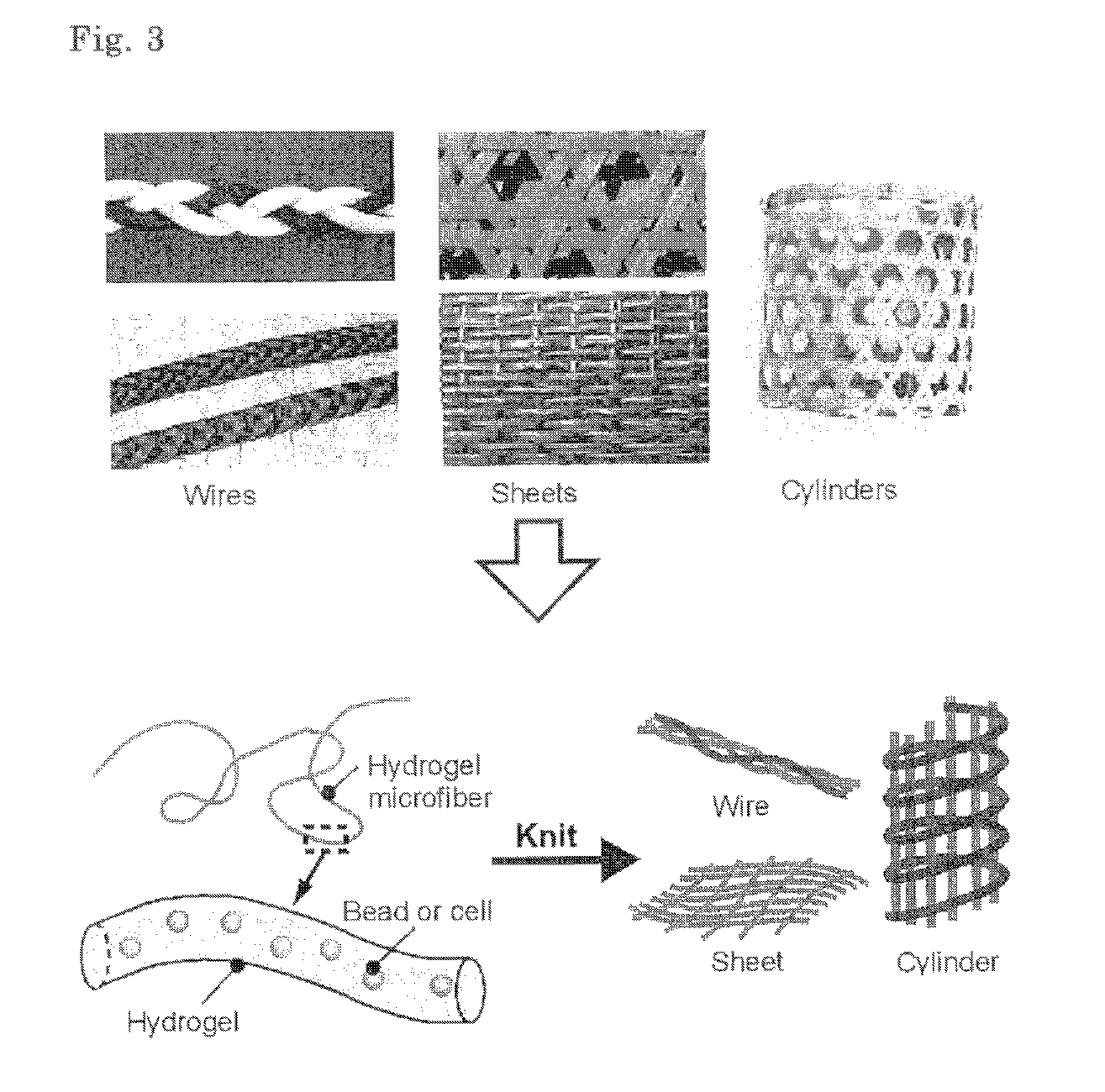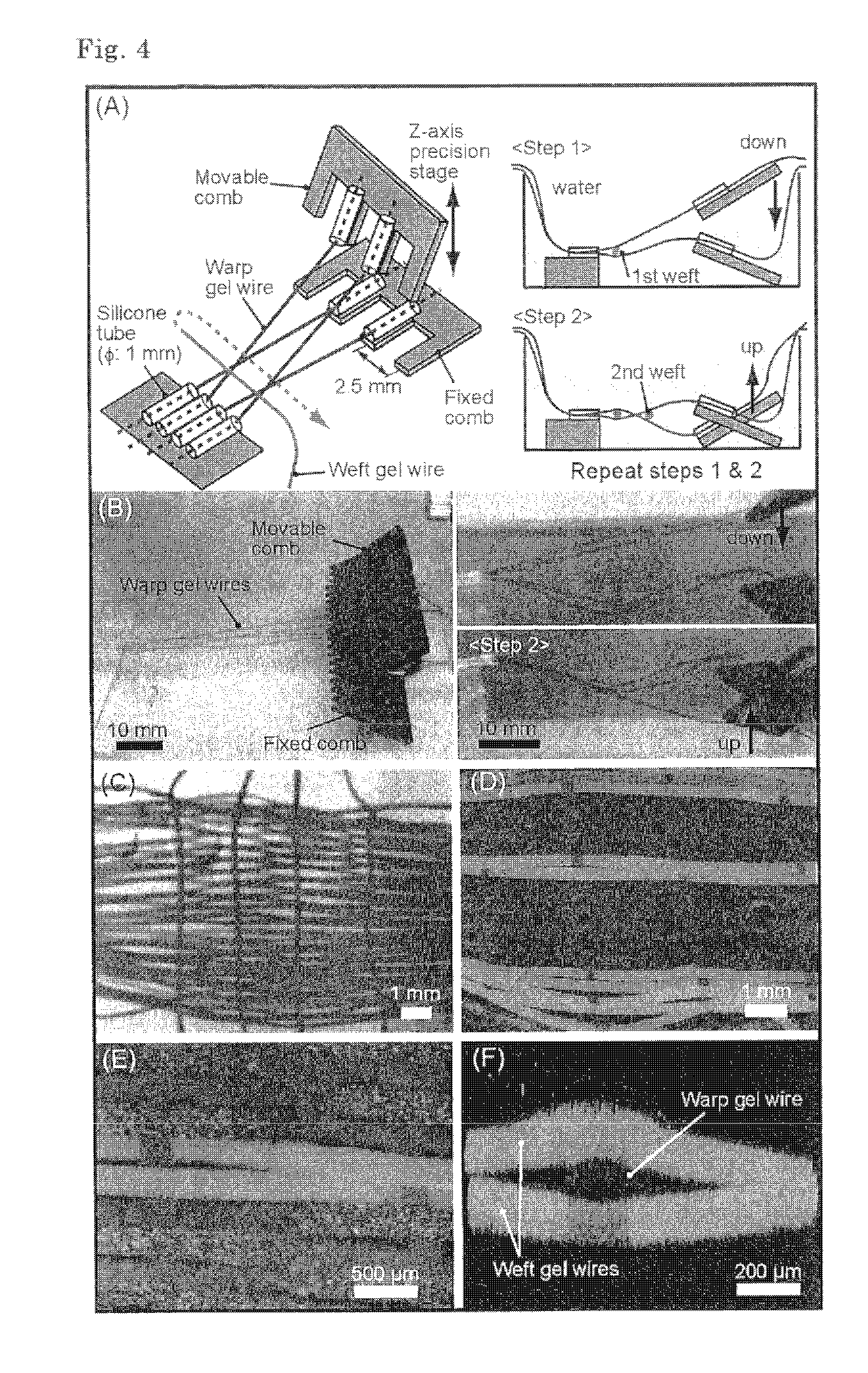Covered micro gel fiber
a gel fiber and micro-gel technology, applied in the field of micro gel fibers, can solve the problems of weak mechanical strength and inability to produce woven fabrics having a microstructure, and achieve the effect of superior mechanical strength
- Summary
- Abstract
- Description
- Claims
- Application Information
AI Technical Summary
Benefits of technology
Problems solved by technology
Method used
Image
Examples
example 1 (
Reference Example)
[0075]An alginate hydrogel fiber was prepared by using a coaxial laminar flow device (Lab. Chip, 4, pp. 576, 2004; Langmuir, 23, pp. 9104, 2007) according to the method shown in FIG. 6, (A). The alginate hydrogel fiber was prepared by using 1.5% w / v sodium arginate (flow rate, Qinner=9 μl / min) as the inner fluid and a 780 mM calcium chloride solution (Qsheath=0.2 to 1.0 ml / min) as the outer fluid (FIG. 6). Gelation occurred at the merge point of the two kinds of fluids, and the diameter of the resulting fiber was 30 to 95 μm depending on the flow rate of the outer fluid (FIGS. 7, (A) and (B)). The gelled alginate hydrogel fiber was received with a petri dish containing deionized water (FIG. 7, (C)).
[0076]A copper wire (diameter: 50 μm) was passed through a glass capillary (internal diameter: 1 mm) so that the tip part formed a loop, and the alginate hydrogel fiber was caught with the loop, and drawn into the glass tube. FIG. 8, (A) is a schematic view of the drawin...
example 2 (
Reference Example)
[0078]A fiber having a core-shell structure was prepared in the same manner as that of Example 1, except that a double coaxial laminar flow device (Lab. Chip, 4, pp. 576, 2004, FIG. 1) was used. As the fluid for core, 1.5% w / v sodium arginate (colored in orange) was used, as the fluid for shell, 1.5% w / v sodium arginate (colored in green) was used, and as the fluid for sheath, a 780 mM calcium chloride solution (Qsheath=3.6 ml / min) was used (FIG. 1, (A)). The resulting fiber having a core-shell structure is shown in FIG. 1, (B). The core diameter and cover thickness of the shell of the resulting fiber were varied depending on the flow rate ratio of the core fluid and the shell fluid (Qcore / Qshell) (FIGS. 1, (C) and (D)).
example 3
[0079]A microfiber consisting of a collagen micro gel fiber covered with alginate gel as the high strength hydrogel was prepared in the same manner as that of Example 2 by using a collagen solution (concentration: 2 mg / ml) containing the 3T3 fibroblasts (cell number: 1 to 10×106 cells / ml) as the fluid for core. A conceptual sketch of the method is shown in FIG. 1, (E). The resulting microfiber was a fiber having a core-shell structure in which the collagen gel as the core contained the 3T3 cells and having sufficient mechanical strength (FIG. 1, (F)).
PUM
| Property | Measurement | Unit |
|---|---|---|
| diameter | aaaaa | aaaaa |
| diameter | aaaaa | aaaaa |
| diameter | aaaaa | aaaaa |
Abstract
Description
Claims
Application Information
 Login to View More
Login to View More - R&D
- Intellectual Property
- Life Sciences
- Materials
- Tech Scout
- Unparalleled Data Quality
- Higher Quality Content
- 60% Fewer Hallucinations
Browse by: Latest US Patents, China's latest patents, Technical Efficacy Thesaurus, Application Domain, Technology Topic, Popular Technical Reports.
© 2025 PatSnap. All rights reserved.Legal|Privacy policy|Modern Slavery Act Transparency Statement|Sitemap|About US| Contact US: help@patsnap.com



